Teaching and developing a dog is one of the most rewarding experiences for a gundog owner. The connection built throughout the training process forges a bond lasting far beyond the dog’s lifetime. It sounds romantic from a 30,000-foot view, but the reality can be a bit of an emotional rollercoaster. One of the most important pieces of advice is to set both you and your dog up for success, and a crucial foundation to the process is finding the right areas to train.
A bird dog, retriever, or versatile dog can’t become proficient at their craft without the correct setup. Many of us don’t live on endless tracts of land tailored to helping a dog develop. In fact, there have been countless incredible dogs who have called an apartment or a quarter-acre lot home. Living in the city or a suburb means finding suitable training ground can be difficult, but using the Hunt App can unlock the perfect spots. The first step in solving this problem is to identify what type of ground you need to train your specific type of dog.
Finding Areas To Train Your Retriever
The bread and butter for anybody looking to train a retrieve is the perfect body of water—but what does good training water look like?
Josh Miller of River Stone Kennels helps us break down what he looks for when developing a dog. “The number one thing I’m looking for when locating new pieces of water to train on is finding a pond I can send a dog all the way across. A lot of people will go to a public boat launch and throw marked retrieves, and there are two major problems with this in my mind.
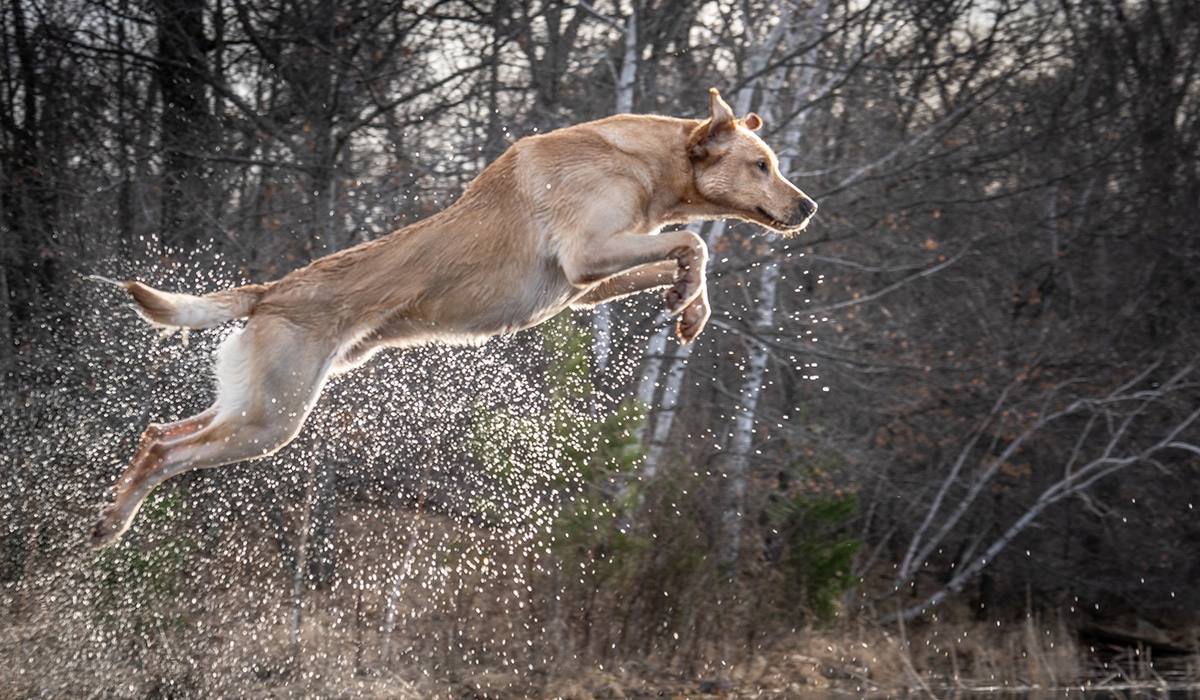
“The first is purely for safety reasons. The last thing I want is a boater to drive by and hit my dog. The second reason is from a training standpoint, as there’s only so much you can do with this setup. You can only work on marked retrieves, and even with a double mark, the bumper is still just sitting in the wide open.”
When you are in search of the right ponds, a great asset at your disposal is the onX Hunt App’s Line Distance Tool. This allows quick and easy measurement from different points and angles across a pond to determine which will be the best for training. A pond that offers the ability to send your dog across at different distances is key to changing up the mental picture.
Another crucial aspect of locating the perfect training pond is finding a clean bank. When teaching a dog new skills, removing distractions is one of the best ways to help them find success. When you’re scouting online, it’s relatively easy to determine the type and amount of vegetation around the bank of a particular pond. We’ll be relying on Aerial Imagery or the Hybrid Basemap for scouting.
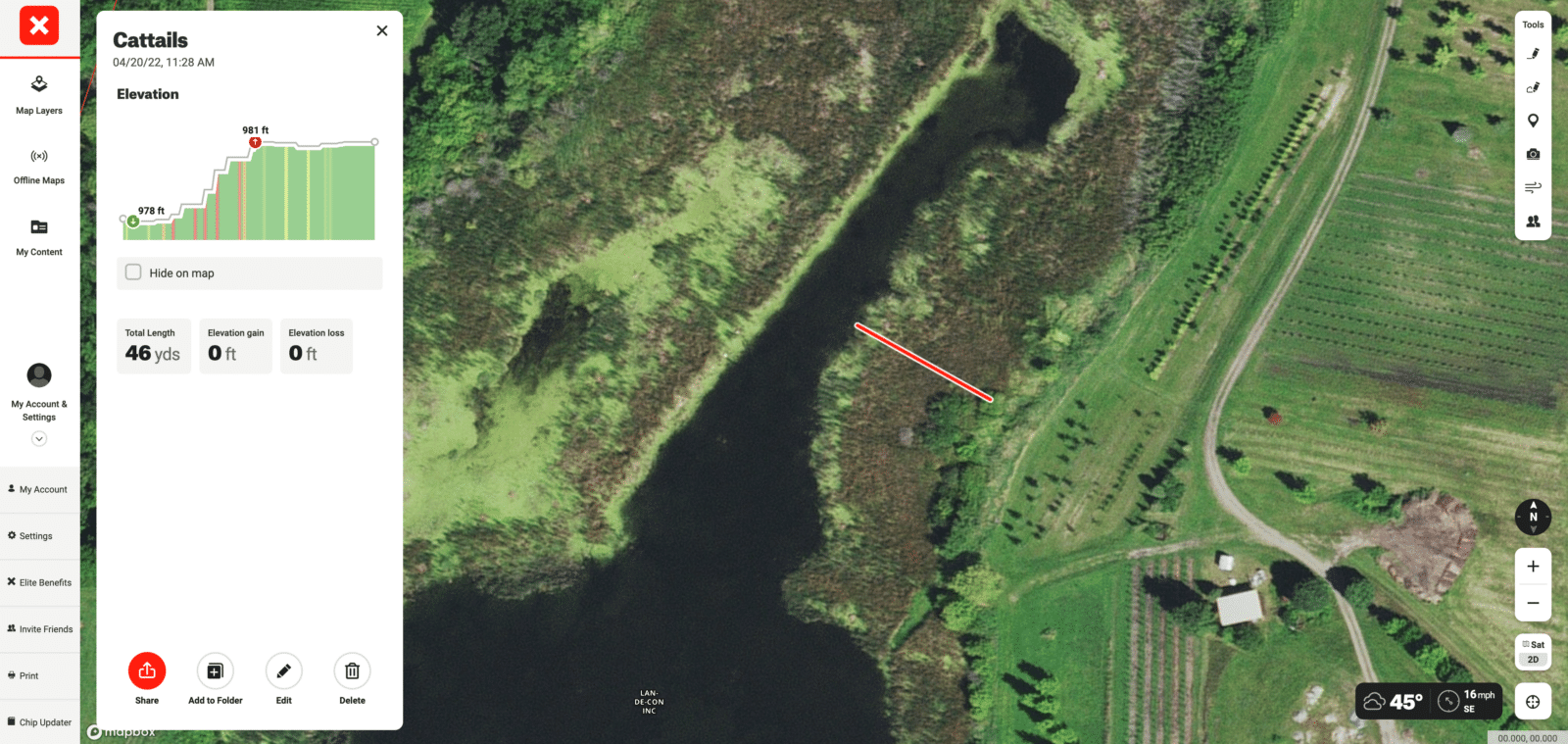
The example pond in the image above would be a poor training area due to the vegetation surrounding it. As a rule of thumb, when trying to determine the height or thickness of vegetation, the darker the color, the thicker and/or taller the vegetation. In this example, the skinny section of water would be the perfect distance across at 20-50 yards. However, there are 50 yards or more of thick, muddy cattails before you could get to it.
“Everyone wants a confident water entry, and you can’t do that with five yards of mud. Putting a young or inexperienced dog in this situation is counterproductive,” says Miller.
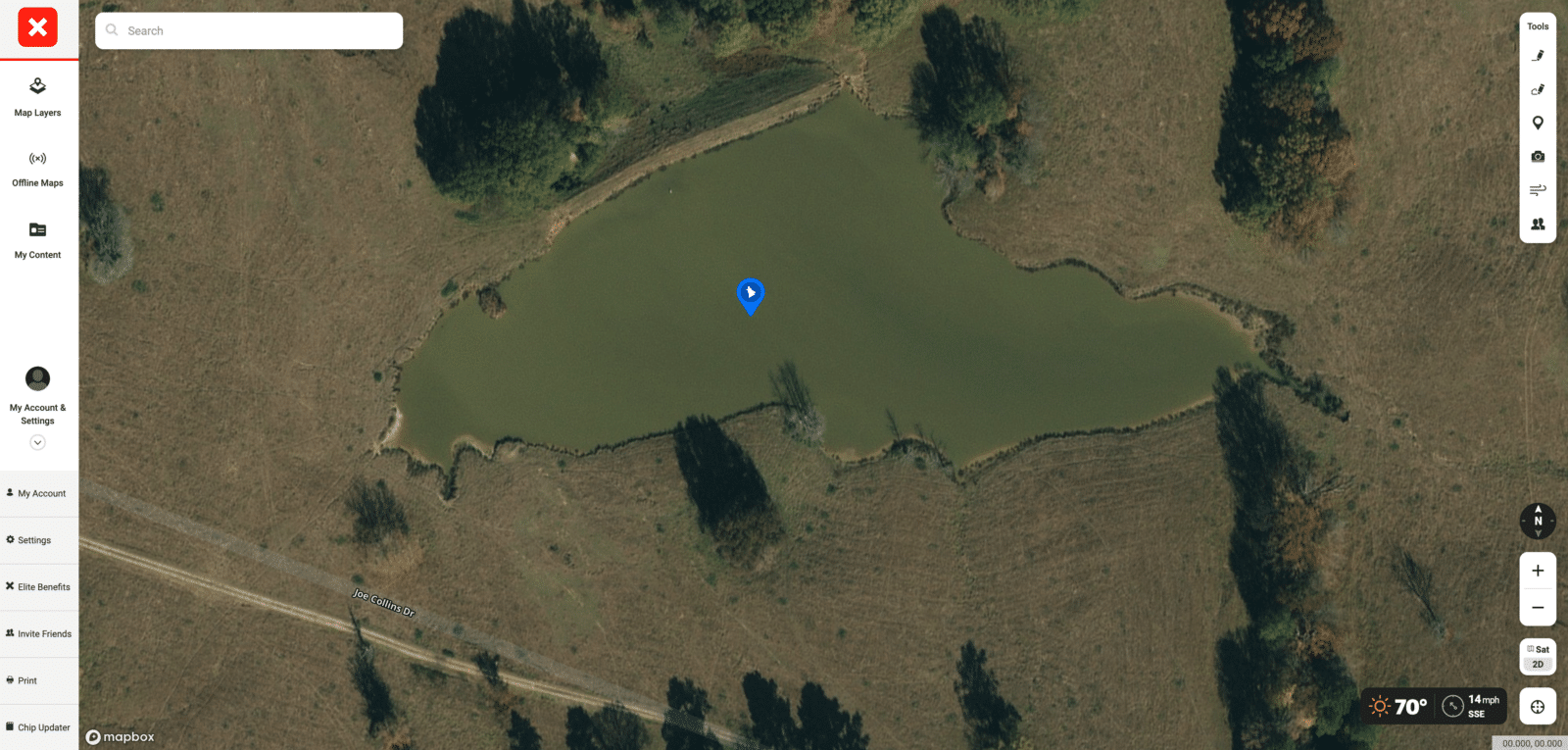
So what are we looking for? In this situation, you can clearly tell the banks are clear. Cattle ponds will generally have clean banks free from vegetation. If you look around the edges, the grass is significantly lighter than in the previous example. How do we know this is a cattle pond? One of the best ways to find out is by looking for cattle trails around the pond. You can see on the left side of the photos, the trails in the grass created by cattle going to and from water.
Another trick to tell the height of vegetation is looking for shadows. Depending on what time of day the photo is taken, you’ll be able to use it to your advantage. If you look at the trees, they are casting a shadow. However, around the pond, you don’t see much of a shadow from the surrounding vegetation, indicating it will be shorter.
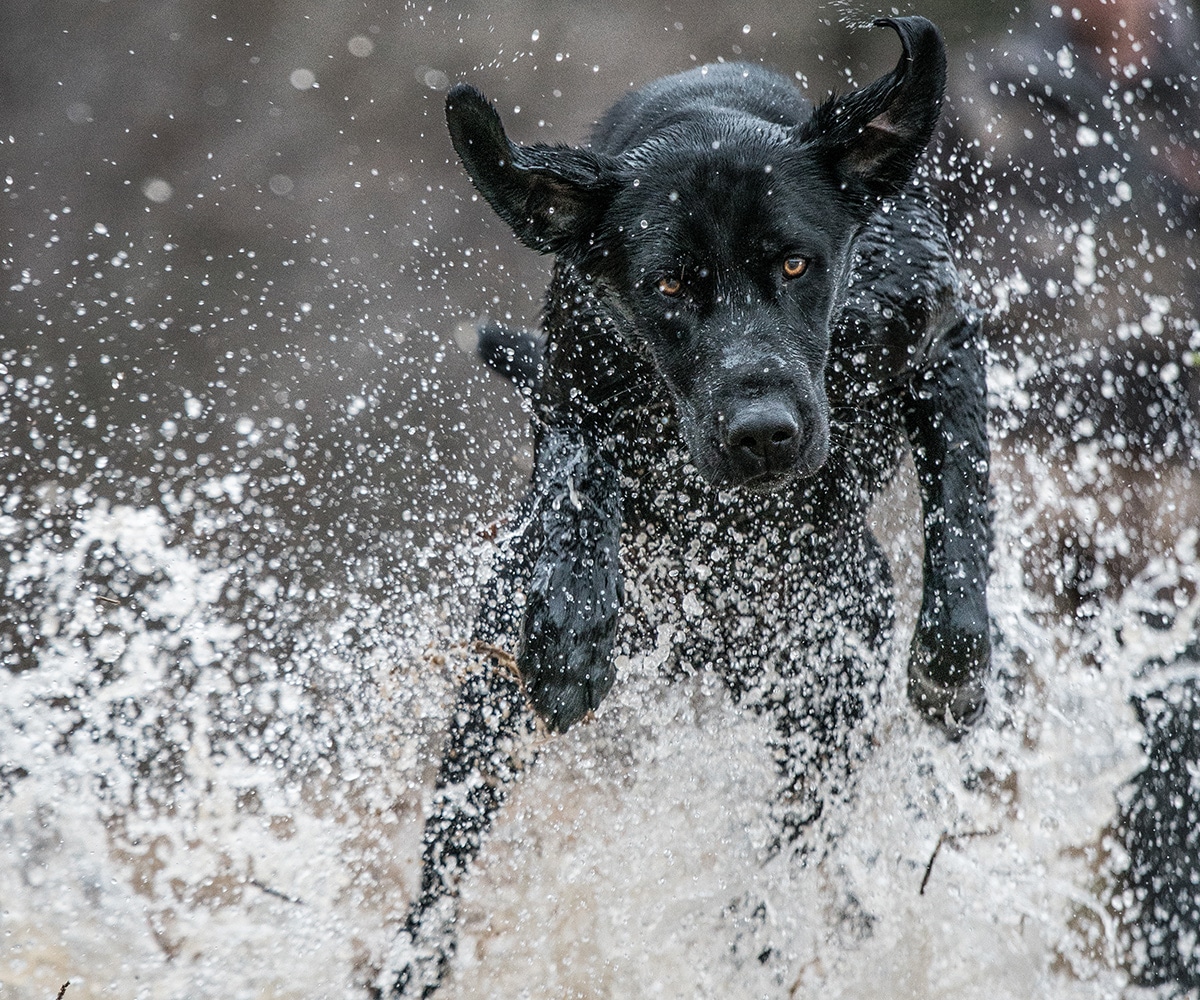
A word of caution is needed when it comes to training water. If a pond is scummy and covered in algae, it’s worth looking for an alternative. In many cases, the presence of algae is completely fine, but in certain areas of the country, Blue-Green Algae is prevalent, especially in the hot months of summer. Blue-green algae is notorious for killing dogs, and it’s crucial to do your own research to identify and avoid it.
Scouting Training Ground for Upland Dogs
The right training ground for your upland dog requires three primary elements: the ability to see everything your dog does, maximum safety, and minimal distractions. While the species-specific training that comes later may require unique environments, say thick woods for ruffed grouse or agricultural land for pheasants, starting your training with these characteristics in mind will provide your dog with the solid foundation they need.
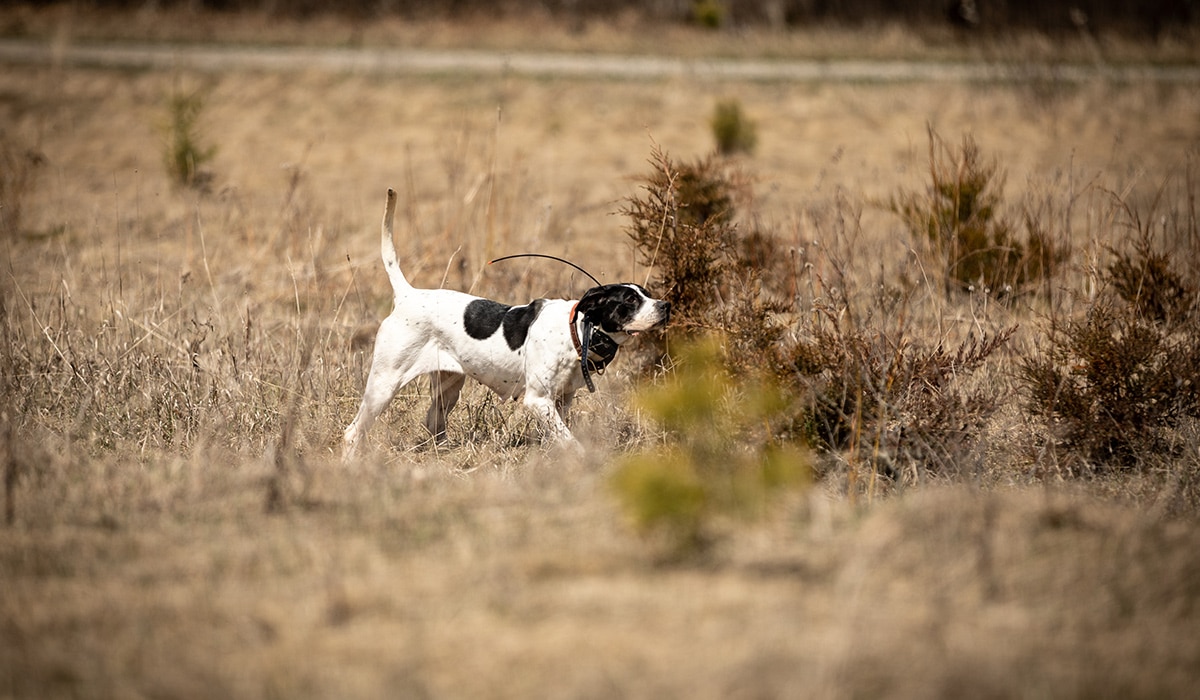
Generally speaking, you’ll want an open parcel of land that presents with either flat terrain or rolling hills. Your ability to provide corrections requires constant supervision, so any terrain or vegetation that obstructs your view offers opportunities for your dog to develop bad habits or get into trouble while out of sight. Additionally, open terrain provides the space you need to use a check cord or train the basics that every dog must master.
Keeping distractions to a minimum will allow your dog to focus on the skill you’ve chosen to train. This is particularly important for young dogs—it often takes little more than a fluttering leaf to completely distract a pup. Finally, the importance of safety cannot be overemphasized. Proximity to roads should be your primary concern, but also consider potentially dangerous terrain or the likely presence of other dogs or wildlife.
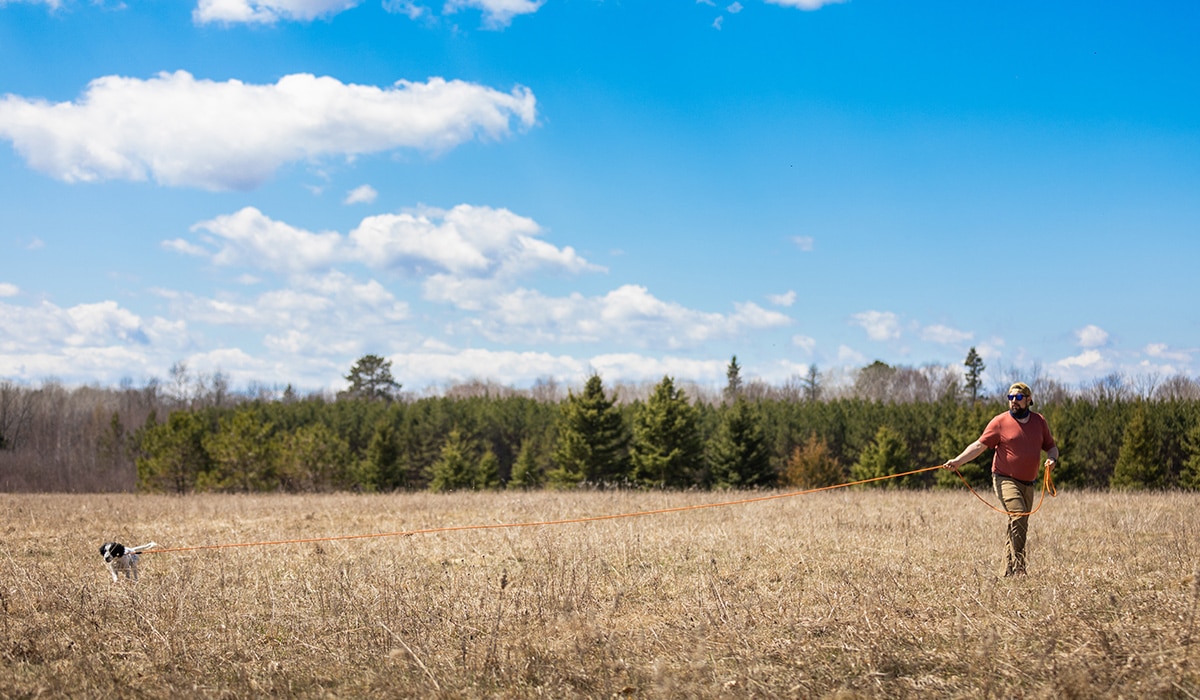
Durrell Smith, owner of Cha’Ann Kennels and The Sporting Life Notebook and star of the recent onX feature film Dogmen, sums it up nicely:
“In South Georgia, specifically the Red Hills, I need dogs that are built with the grit of the red clay. As superstitious as it sounds, we spend a lot of time on the ground, miles at a time, moving through briars, blackberry bushes, pineywoods, and heat. We work young dogs in open areas that won’t discourage them from pursuing game, and we slowly introduce them into rougher elements of our terrain as they get a little older.”
Finding the ideal training area is made easy with just a few onX Hunt features, and it all starts with the Hybrid Basemap. By combining topo lines with satellite imagery and enabling your Public/Private Layers, you’ll be able to identify areas of public land that meet our ‘open and flat’ criteria. The Line Distance and Area Shape Tools allow quick measurements, so determining the area of a potential training ground or the distance from potential hazards is a snap.
Lastly, as mentioned in the retriever section above, satellite imagery gives you a way to determine the height of grasses and other vegetation. Use shadows and colors to make your best guess, but know that things could look different when you put boots—and paws—on the ground.
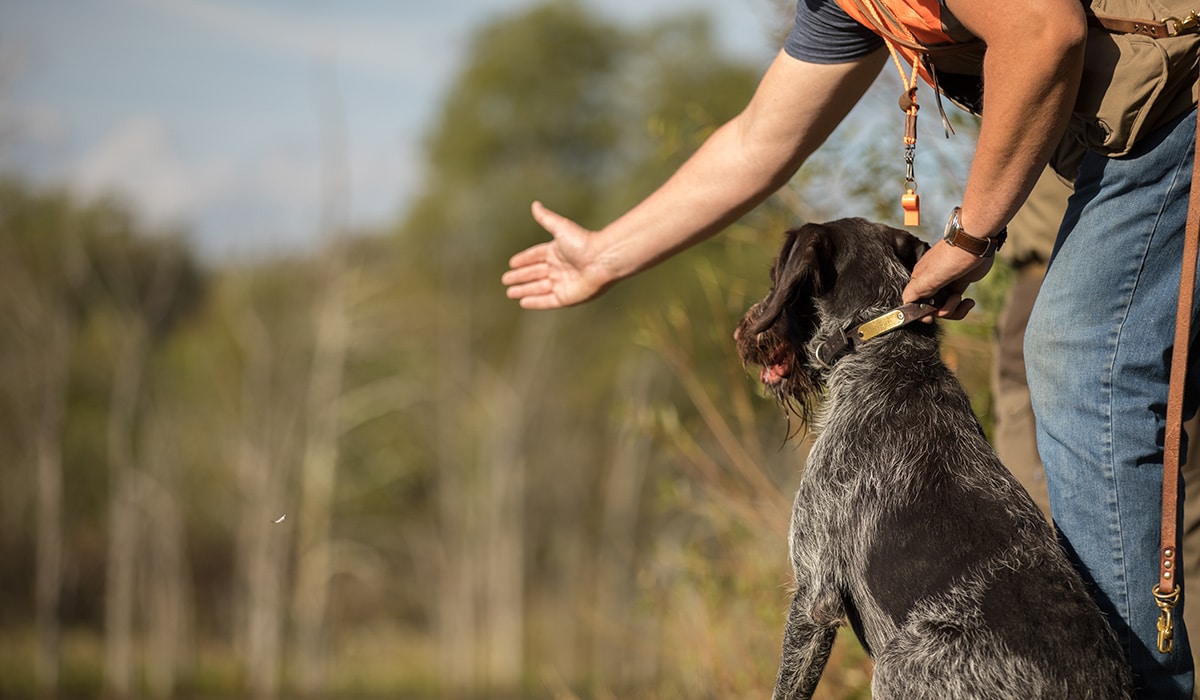
Versatile Dog Training Areas
Versatile dogs are expected to perform in a variety of environments, from pointing birds and retrieving ducks to blood tracking and dispatching vermin. This means you’ll need to use a variety of types of land and water to adequately train and expose your hunting companion.
The ground needed for the field and pointing portion of training is exactly the same as you would need for a traditional pointing breed, as described in the section above.
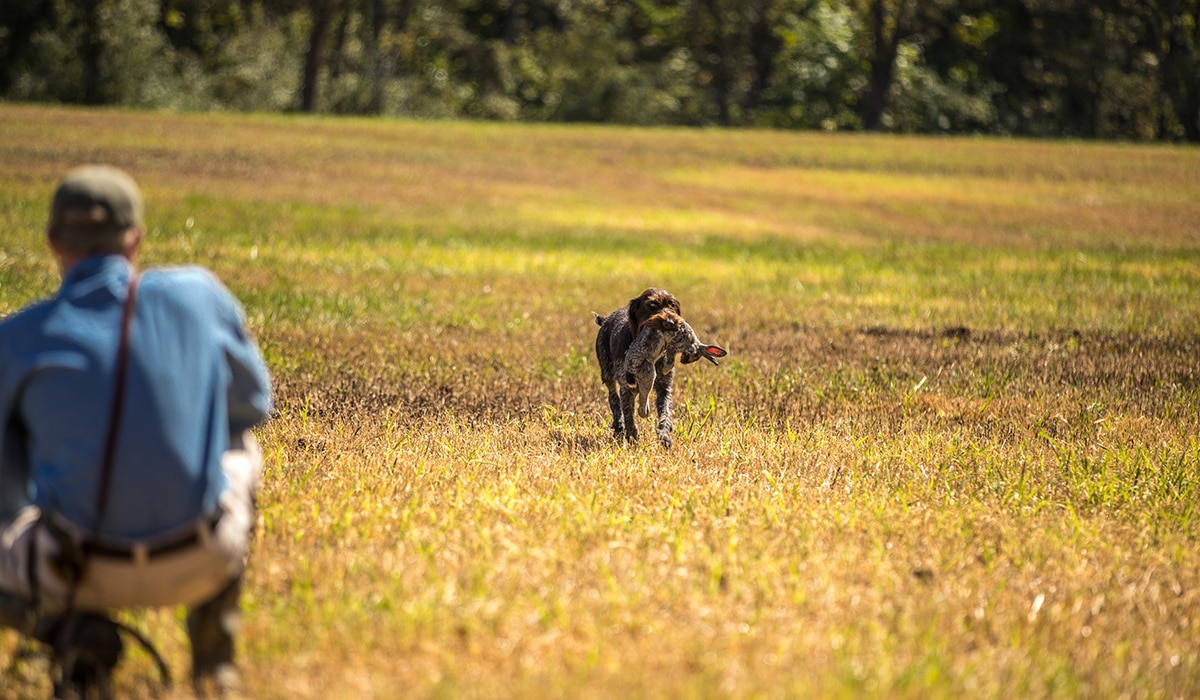
In addition to pointing and bird work, versatile dogs will need areas to train both the fur and feather drag when it comes to the field. Finding suitable ground for field drags is fairly easy. It can be anything from a short grass field to a setting similar to a bird field. You’ll need an area a minimum of 300 meters long that’s wide enough to run multiple drags without getting too close to the past or next drag. It’s important to train in multiple venues for drags, because when it comes to testing time, the field could be tall and thick or almost like a golf course. If a dog is trained on just one area, it could come back to bite you during test time or while out hunting.
There are also similarities shared between the water work needed for versatile dogs and retrievers. A clean pond in which the dog can swim to the other side is important for training blind and marked retrieves. However, the versatile breeds also require a different type of water for training the “duck search” or “search behind the live duck” found in the North American Versatile Hunting Dog (NAVHDA) and Jagdgebrauchshundverband (JGHV) testing systems.
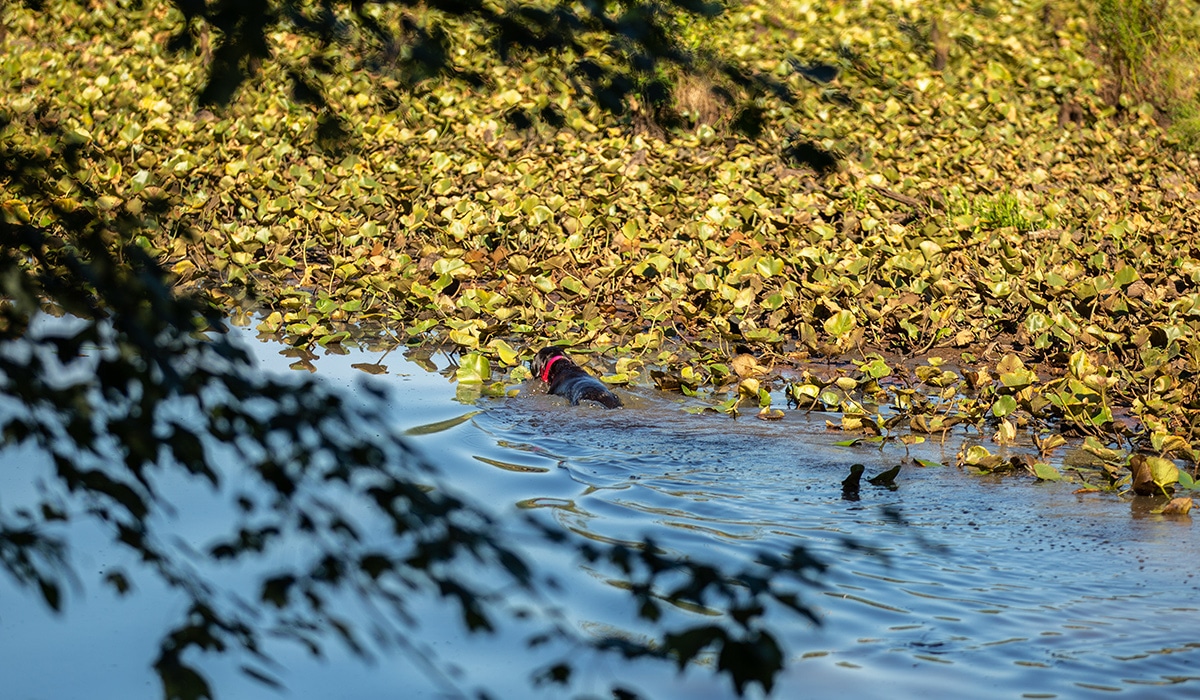
The ideal cover for a duck search is nearly the opposite of what you’re looking for in retriever training. You want the thickest, nastiest cover with a lot of emergent aquatic vegetation such as lily pads, cattails, and bullrushes. The goal is to provide the duck with enough cover to hide or escape, allowing the dog an opportunity to track scent over the water. However, you still need a clean area where you can send your dog on the search. If you’re trying to line the dog out through cattails, they’ll often be pulled along the bank and not into the water. When you’re looking for this on the map, search for cover in the water, which will often show up as a lighter green on the nearly black water.
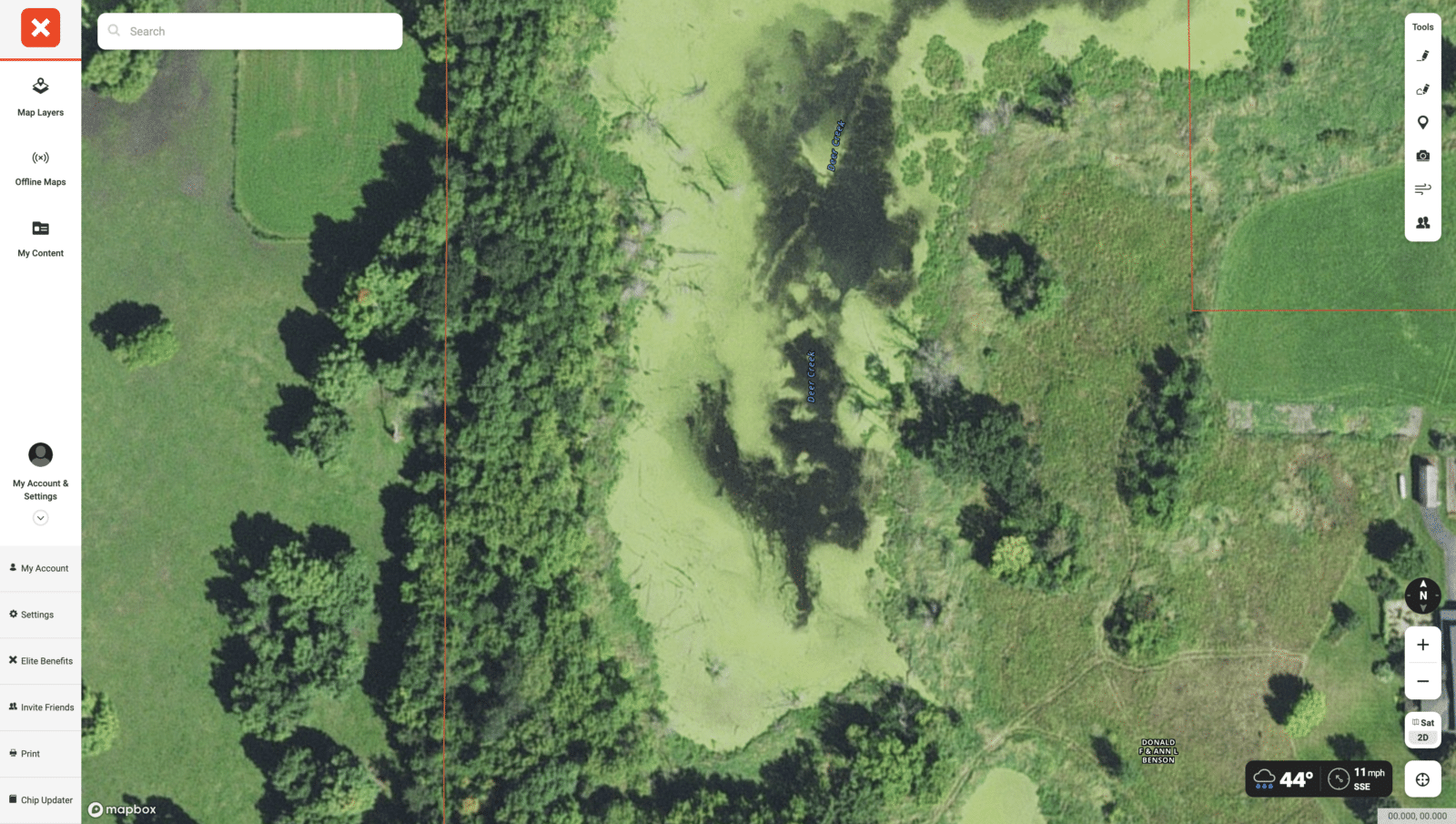
Finding the correct type of forest is going to be very important for early exposure, and even more so if you decide to run your versatile dog in the VGP, which is the final test in the JGHV testing system. There are three different types of forest you’ll need to train.
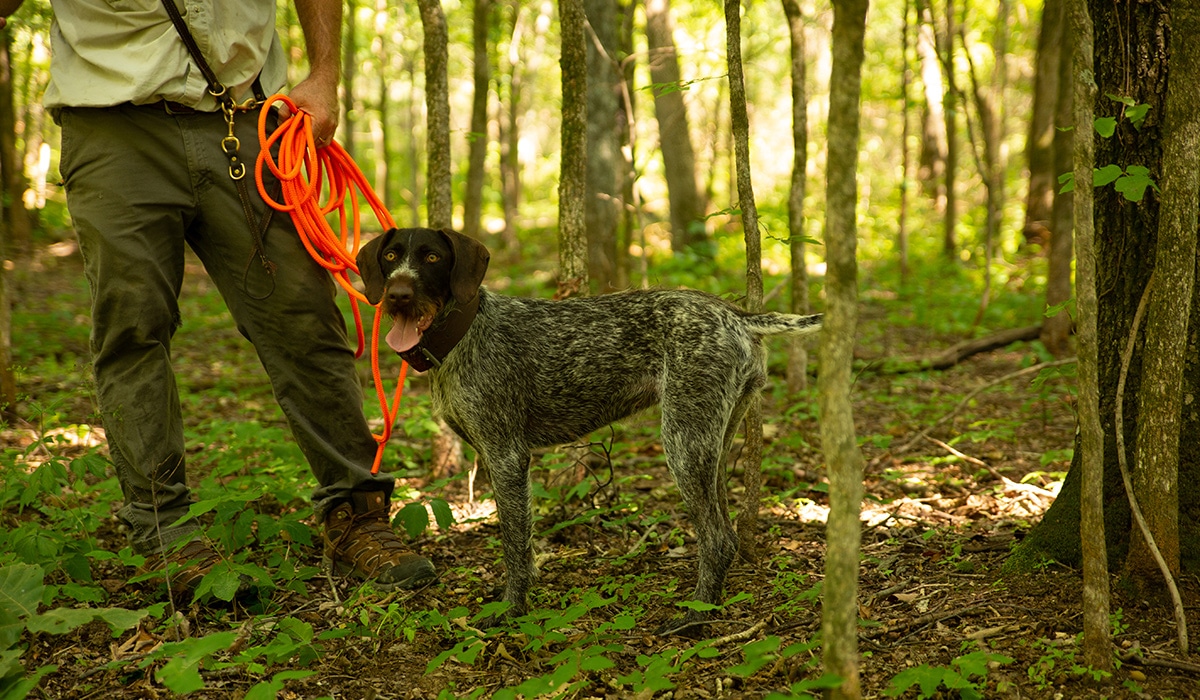
The first is woods with an open understory. You’ll use these areas for blood tracking and forest drags. The best way to identify these areas is via aerial imagery and the Tree Species Maps Layers. Start by turning on the Deciduous and Coniferous Distribution Layers. Finding areas with oak or maple trees is often a sound bet when looking for a clean understory, as these large trees often outcompete smaller vegetation for resources. After identifying areas with oaks or maples, turn off the layer and look at the canopy size of the individual trees. The larger the canopy, generally, the larger the tree.
It is worth ground-truthing areas to confirm the understory is free from growth. These areas are also great for training forest drags, as it makes it easier to drag game without getting beat up by brush. It’s also important to have enough acreage so you’re not dragging or running blood tracks too closely together. By using the Line Distance Tool, you can easily plan out drags or blood tracks while leaving a minimum of 50-100 yards between drags and at least 100 yards between blood tracks.
The second type of forest isn’t as dependent on the type or density of cover but relies heavily on the size of the parcel. The Stöbern, or Independent Forest Search, requires a roughly 100×100-meter area in which the dog is required to search while the handler remains at a stationary position. It’s best to find a piece of woods roughly matching these dimensions. This makes it simple to run bumpers around to the corners via an ATV or UTV so when testing time comes around, the dog is confident going out to search a piece of timber roughly that size.
The last type of woods is a thick area where you are able to train a dog for the Dense Cover Search, also known as the Buschieren. You’re looking for thick, nasty cover similar to what you would hunt for grouse and woodcock. It’s characterized by areas with high stem densities and thick undergrowth. This test is to show that your dog is able to collapse its search area when hunting thicker cover. When searching for these areas on the Hunt App, look for areas with small-canopied, densely clustered trees indicating high stem densities.
Parting Wisdom
No matter what type of dog you’re training, finding the right training locations is crucial. This allows you to set the dog up for a successful future spent hunting together in the field. Searching for new properties to train in the offseason should be almost never-ending. Training in the same area time after time will work against you, as the dog gets comfortable and into a routine. It’s important to challenge the dog mentally, introducing it to new situations, so no matter what you face in the field, both of you will be up for the challenge.